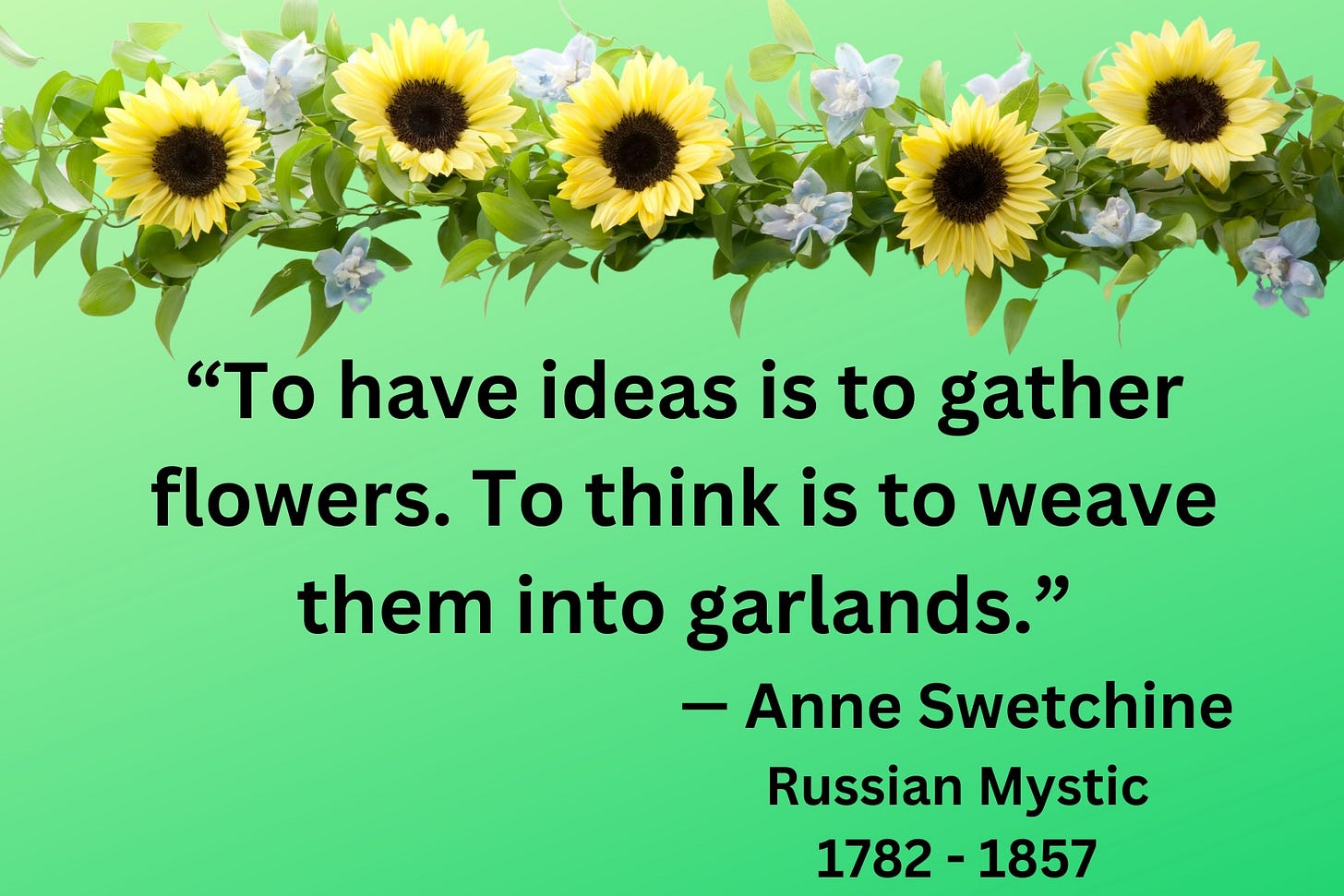Issue #58
Do you ever have too many ideas? Sometimes, when writing, I am swamped with ideas, and often, I don't know which ones to choose.
Writing fiction is full of opportunity. Do you make the main character tall, short, or medium height? Does he have blonde, black, or curly hair? Does he have a physical, social, or mental disability? Hundreds of questions. Thousands of answers. Sometimes, having too many ideas can become a barrier to creating. Much like life, writing fiction requires making choices — choosing a path to follow and not looking back. The characters take on a life of their own.
What is the best path to follow? What are the best choices to make? Sometimes, I have twenty ideas, but only two or three are worth keeping. Don't be afraid of choosing — of following a path to where it takes you.
And keep the ideas coming. Even bad ideas can lead you somewhere new and inviting. The good ideas won't appear if there are no bad ideas on which to stand. Light a candle and watch the ideas grow by leaps and bounds.
Several years ago, I took a personality test at work. The creator of the test told my boss that most people have one or two good ideas. The test showed that I could generate ten ideas, but only one or two would be of any value.
Ideas alone don’t have much value unless they are massaged, altered, and woven together with other ideas. Ideas must build on other ideas. Rarely do we think of an idea that will stand by itself.
Don’t discard an idea because it seems impossible or useless. Instead, bounce it off other people, allow them to tweak it, and use it as a starting point to generate different ideas. Play with your ideas and explore them. All ideas have value.
Leonardo Da Vinci only completed a handful of paintings in his lifetime, including the Mona Lisa and The Last Supper, but he generated thousands of ideas in his journals—some of which were hundreds of years ahead of their time. He was able to weave ideas from art, science, engineering, and the humanities into garlands of ideas.
When my oldest daughter was in high school in the 1990s, she told me a friend had participated in a book burning with people from her church. I was shocked to find that people still burned books. I was raised to believe that books were precious and should be preserved. I had read Fahrenheit 451 by Ray Bradbury and knew that book burning was evil.
Book burning has a long history of being used by people in authority to suppress and censor the ideas of others. In 213 BCE, the Chinese emperor burned books. In 325 CE, the Roman emperor issued an edict requiring certain books to be burned. When the Spanish conquered the Aztecs and Mayans in the 1500s, they ordered the burning of Aztec and Mayan manuscripts. In the 18th century, the French and Prussian governments burned books by Voltaire, a philosopher. In the 19th century, pro-slavery southerners burned the books of abolitionists. In the 1930s, the Nazis burned thousands of books that were considered to be a threat to their rule.
As Matshona Dhliwayo says in this quote, people cannot burn ideas. They can destroy books, libraries, and scholars, but not ideas. Remember that your power rests in your ideas. You can change your life and the lives of others with your ideas.
Plant seeds of hope in the hearts of others!
Thank you for reading.







